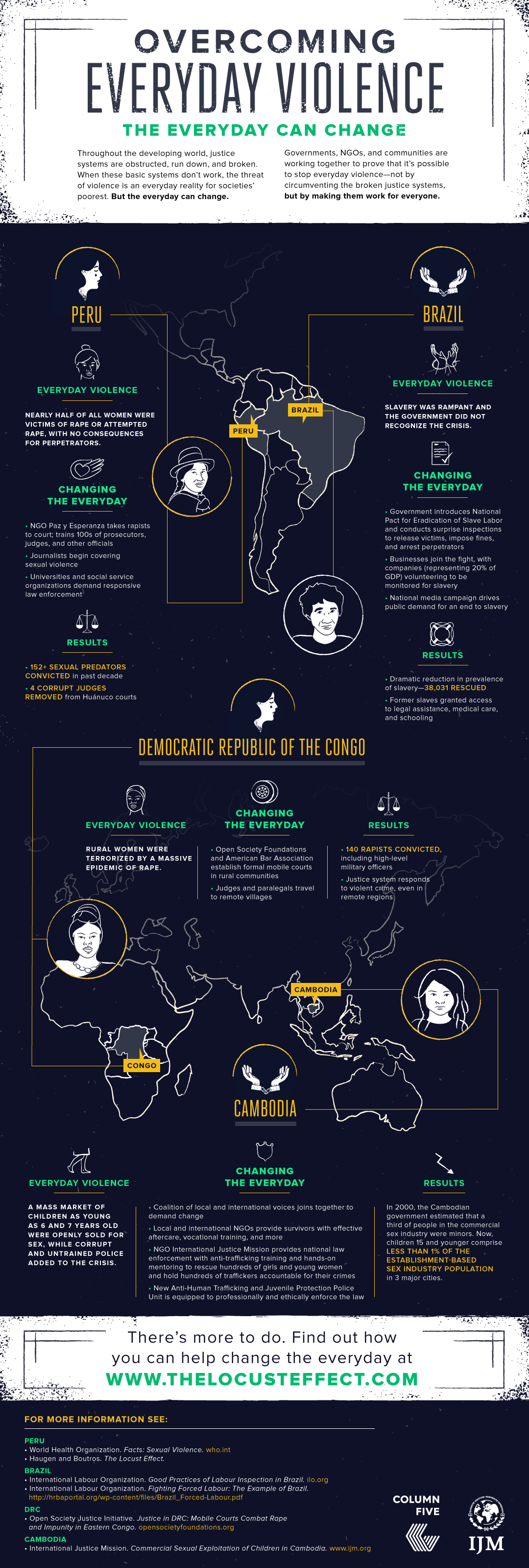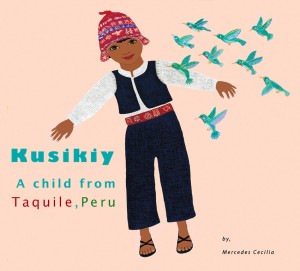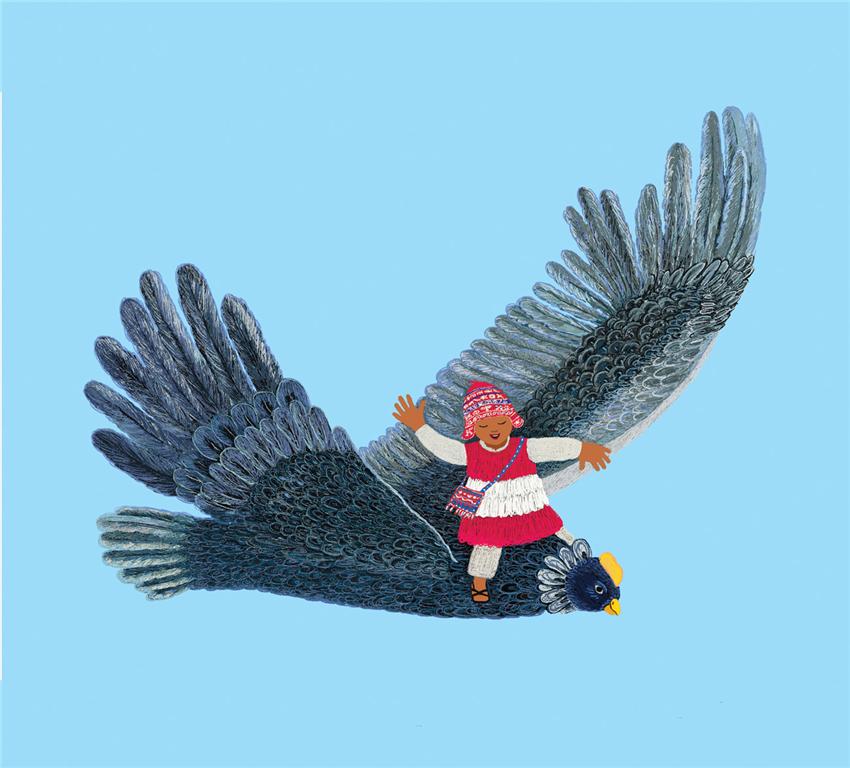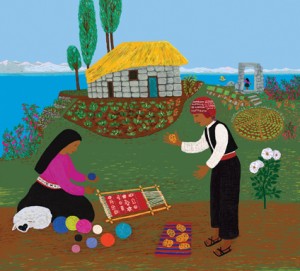It’s summer vacation time for BT and his mom. They are going to visit BT’s grandmother, Abuela in Spanish, at her farm in Peru and this time Jack, BT’s guinea pig, gets to go with them.
Add a CommentViewing: Blog Posts Tagged with: Peru, Most Recent at Top [Help]
Results 1 - 11 of 11
Blog: The Children's Book Review (Login to Add to MyJacketFlap)
JacketFlap tags: Guinea Pig, Cultural Wisdom, Dedicated Review, Angela Mia De La Vega, Juicy Jack Adventures Series, Leigh Carrasco, Travel, Ages 4-8, Adventure, Ages 9-12, Pets, Summer, Chapter Books, Bilingual Books, Spanish, Books for Boys, Author Showcase, Peru, South America, Animal Books, Add a tag
Blog: The Children's Book Review (Login to Add to MyJacketFlap)
JacketFlap tags: Food, Travel, Ages 4-8, Picture Books, Culture, Language, Bilingual Books, Author Showcase, Peru, Places, Cultural Wisdom, Carole P. Roman, Culture Around The World, Introduction To Culture, Add a tag
Due to the well condensed and simplistic format, If You Were Me and Lived in … Peru: A Child’s Introduction to Cultures Around the World and the entire series can easily be the basis for further discussions of Peru, the Spanish language, cultures, traditions, historical sites and home life.
Add a CommentBlog: OUPblog (Login to Add to MyJacketFlap)
JacketFlap tags: infographic, law enforcement, *Featured, victor, Images & Slideshows, #Cambodia, Gary A. Haugen, Locust Effect, Victor Boutros, locust, boutros, haugen, imprisons, Books, Law, Current Affairs, Brazil, human rights, violence, poverty, Peru, Congo, gary, Add a tag
The struggle for food, water, and shelter are problems commonly associated with the poor. Not as widely addressed is the violence that surrounds poor communities. Corrupt law enforcement, rape, and slavery (to name a few), separate families, destroys homes, ruins lives, and imprisons the poor in their current situations. Gary A. Haugen and Victor Boutros, authors of The Locust Effect: Why the End of Poverty Requires the End of Violence, have experience in the slums, back alleys, and streets where violence is a living, breathing being — and the work to turn those situations around. Delve into the infographic below and learn how solutions like media coverage and business intervention have begun to positively change countries like the Congo, Cambodia, Peru, and Brazil.

Download a copy of the infographic.
Gary A. Haugen and Victor Boutros are co-authors of The Locust Effect: Why the End of Poverty Requires the End of Violence. Gary Haugen is the founder and president of International Justice Mission, a global human rights agency that protects the poor from violence. The largest organization of its kind, IJM has partnered with law enforcement to rescue thousands of victims of violence. Victor Boutros is a federal prosecutor who investigates and tries nationally significant cases of police misconduct, hate crimes, and international human trafficking around the country on behalf of the U.S. Department of Justice.
Subscribe to the OUPblog via email or RSS.
Subscribe to only current affairs articles on the OUPblog via email .or RSS.
The post Overcoming everyday violence [infographic] appeared first on OUPblog.
Blog: (Login to Add to MyJacketFlap)
JacketFlap tags: Chile, Uncategorized, Canada, Japan, Taiwan, Amazon, Philippines, Mexico, France, Australia, India, Poland, Germany, New Zealand, Pakistan, Puerto Rico, Belgium, Spain, Slovenia, United Kingdom, Finland, South Africa, Brazil, Singapore, Nicaragua, Ireland, Netherlands, Italy, Turkey, Israel, Switzerland, Nigeria, Sweden, Indonesia, Mongolia, Thailand, Argentina, Morocco, Peru, Jamaica, Norway, Egypt, Indiebound, Iceland, Venezuela, Bahamas, Denmark, Greece, United States, Portugal, Czech Republic, Colombia, Romania, Croatia, Saudi Arabia, Hong Kong, Ukraine, Jordan, Yemen, Algeria, Hungary, Bermuda, Ecuador, Bulgaria, Estonia, Tunisia, Trinidad and Tobago, Girls Sports, Bahrain, Lithuania, Namibia, United Arab Emirates, Grant Overstake, Inspirational Sports Stories, Maggie Vaults Over the Moon, young adult sports, KSHSAA, Pole Vault Fiction, Track and Field Stories, sports novels, Recommended sports books for teens, Watermark Books and Cafe, Kansas State High School Activities Association Journal, Austria Botswana, Insirational Sports Books, Isle of Man, Republic of Korea, Russian Federation, Add a tag
Maggie Steele, the storybook heroine who vaults over the moon, has been attracting thousands of visitors from around the world. So many visitors, in fact, that she’s using a time zone map to keep track of them all.* People are … Continue reading ![]()
Blog: The Children's Book Review (Login to Add to MyJacketFlap)
JacketFlap tags: Multicultural, Illustrator Interviews, Author Interviews, Latino, Author Showcase, Peru, Mercedes Cecilia, Add a tag
Author Showcase
By Bianca Schulze, The Children’s Book Review
Published: November 20, 2011
 Mercedes Cecilia was born and raised in Peru. She studied Naturopathic methods of healing, Jin Shin Jyutsu. Mercedes Cecilia has won several awards for her paintings, her Art in Education programs and community events.
Mercedes Cecilia was born and raised in Peru. She studied Naturopathic methods of healing, Jin Shin Jyutsu. Mercedes Cecilia has won several awards for her paintings, her Art in Education programs and community events.
Can you share a little on your background and how you became a children’s book writer and illustrator?
When we came to live in USA, storytelling was a way for me to treasure our diversity as immigrants to a new land. At school, in ninth grade I found myself spinning the few English words I knew to weave the stories about the people of the Andes Mountains. When I painted an imaginary portrait to give a face to the Amazon River so that it could tell its own story, my first children’s book began.
What inspired you to write Kusikiy, A Child from Taquile, Peru?
I always wanted to write a book about Peru and I treasure the times I lived with the people of Taquile. Since 1980 I have shared slide presentations of Taquile and other small communities of the Andes of Peru, in different universities, and schools. One day in the summer of 2007, I was having lunch with my 7-year-old grandson, Paulo Andres, and we were talking about condors and glaciers, when he asked me if I could draw the APU, the Spirit of the Great Glacier. This is how the story of Kusikiy started; soon I decide to share the story with everyone.
What age group did you write the book for?
I wrote Kusikiy A Child from Taquile, Peru thinking a child of 5 to 12 would enjoy reading it as well as friends, parents and teachers. I wanted to make a children’s book, because I feel a book with pictures allows the reader to become a co-creator of the story.
Your artwork is rich and vibrant. Can you tell us how you create your illuminating illustrations?
Thank you. First I did the drawings and used soft pastels on black tinted paper. I chose pastels as a medium, because the mineral pigments use to die wool is similar to the pigments in soft pastels. Because weaving and knitting is central to life in Taquile, I wanted to have those bright and pure colors in the illustrations. After I finished illustrating the story and photographed each painting, I used a digital tool to delineate more of the shapes.
Should we expect to see another book from you soon?
Yes, I am now finishing writing and illustrating the story of a girl from a village of
Add a CommentBlog: OUPblog (Login to Add to MyJacketFlap)
JacketFlap tags: History, Education, Science, Current Events, Geography, A-Featured, climate, World History, Peru, flood, Andes, natural disaster, glacial, lesson, glaciers, fixes, glacier, Mark Carey, Add a tag
Mark Carey is an assistant professor of environmental history at Washington and Lee University and is the author of In the Shadow of Melting Glaciers: Climate Change and Andean Society. The book illustrates in vivid detail how people in the Andes have grappled with the effects of climate change and ensuing natural disasters for more than half a century. In the original post below Carey looks how a recent natural disaster can teach us a climate lesson.
Although some US senators may resist discussion of the new climate and energy bill this week, people around the world continue to live with incessant dangers that disrupt their daily lives and threaten their existence. A recent glacier avalanche in Peru, for example, unleashed a powerful outburst flood that caused significant destruction. It was the same kind of flood that increasingly endangers people living near melting glaciers worldwide, from Switzerland and Norway to Canada and New Zealand, China and Nepal.
Beyond underscoring the need to move forward quickly with a new climate bill, the recent outburst flood also reveals that climate change discussions too often focus solely on the causes of climate change. While critical, this emphasis on what drives climate change and who (or what) is to blame, can derail dialogue about climate impacts that are already occurring worldwide, sometimes with deadly consequences.
The April 11th flood from Peru’s Lake 513 on the slope of Mount Hualcán inundated areas near the town of Carhuaz, destroying dozens of homes and washing away roads. Tens of thousands of residents also lost access to potable water when floodwaters damaged a water treatment facility. Nonetheless, the flood could have been much worse. Luckily, engineers had already partially drained Lake 513 — along with dozens of other glacial lakes in the region.
For seven decades, Peruvian engineers have worked to contain the danger posed by glacial lakes. Nearly 6,000 residents have died from glacial lake outburst floods since 1941, propelling the Peruvian government to drain or dam a total of 34 glacial lakes. Their expertise is now crucial in helping specialists in Asia, North America, and Europe to minimize glacial lake hazards.
The recent flood reveals the promise, as well as the pitfalls, of the Peruvians’ technological fixes. Lake 513 was purportedly one of the glacial lakes that engineers had in fact “fixed.” It originally formed at the foot of a shrinking glacier in the early 1980s, and by 1985 was a significant threat to thousands of Carhuaz residents. Although engineers responded by pumping out millions of gallons of water, the lake kept growing. Finally, in 1991 the dam burst and caused an outburst flood — just as it did earlier this month. Engineers then installed a complex tunnel system to drain even more water out of the lake. Their damage control worked . . . until two weeks ago.
Peru’s experience reminds us that disaster vulnerability is not just about environmental processes. Avalanches and floods only become disasters when they affect people.
In Carhuaz in the 1970s, residents defied zoning laws that prohibited construction in potential avalanche and flood paths below Mount Hualcán. The laws came into being after glacial avalanches on neighboring Mount Huascarán killed 4,000 people in 1962 and 15,000 in 1970. At that point government officials and UNESCO experts determined that Mount Hualcán glaciers were also unstable, and insisted that the population relocate outside the floodplain. Nonetheless, locals resisted, perceiving this as yet another bureaucratic imposition. They also believed that government engineering projects (technology) could p
Blog: La Bloga (Login to Add to MyJacketFlap)
JacketFlap tags: women of color, images of women, peru, Add a tag
Maria walks into the central city crowd, homeless, destitute, the rest of her life in front of her. And that’s that. Bluhm chases her, losing ground until suddenly she is not there.
 After twenty years with Maria, before that life with a wife, his mother, two kids, a maid, Carlos Bluhm stares into the brownness of the city numb with pain, oblivious to the crowd’s resentment of his gringoness on their streets. In the distance, Bluhm’s German-Peruvian pals call his name to bring him back into their protective embrace. So ends Marie Arana’s Lima Nights. It’s a novel whose pages you keep turning not because the characters are endearing—quite the opposite—but to see if there’s a point to Carlos Bluhm’s loser of a life.
After twenty years with Maria, before that life with a wife, his mother, two kids, a maid, Carlos Bluhm stares into the brownness of the city numb with pain, oblivious to the crowd’s resentment of his gringoness on their streets. In the distance, Bluhm’s German-Peruvian pals call his name to bring him back into their protective embrace. So ends Marie Arana’s Lima Nights. It’s a novel whose pages you keep turning not because the characters are endearing—quite the opposite—but to see if there’s a point to Carlos Bluhm’s loser of a life.Maria has never been there throughout the novel, despite her pivotal role in the mess that is Bluhm’s life. He first spots her at a taxi dance bar, Lima Nights, where women keep men buying liquor, then after hours making whatever deals they can turn. An experienced woman counsels Maria to capture a man’s attention by slipping her datos into the guy’s coat pocket. Make a good choice and a woman earns long-term security and a taste of the good life that comes of being a man’s mistress.
Maria chooses Carlos, a forty-something man out on the town with his three pals. Not that Maria’s been on the job all that long, or other work for that matter. She’s fifteen years old, a couple weeks from turning legal. Maria desperately wants out of a life in Lima’s worst slum, her mother an alcoholic who takes in men and laundry to support Maria and her two brothers. Talk about highly motivated to do whatever it takes to shake free of that futureless history, that’s Maria. If something good has come of Maria’s years with Carlos it’s the slim chance that her future will not be to return to that slum and her mother’s footsteps.
But Lima Nights is not Maria’s story. And it’s not Carlos Bluhm’s, despite his central role. Lima Nights is a political novel. Marriage politics looms above all, defining the tragedy that comes to familia Bluhm. Arana casts a cold, subjective eye on men’s philandering and women’s tolerance. Except for Oscar the shrink, the cohort are scions of rich families down on their luck. With their grandfathers’ economic empires dismantled, the men live in Lima’s elegant houses but work regular jobs like camera salesman, appliance store entrepreneur, hotel manager. Bluhm struggles to make ends meet; to pay for his pleasures he begins dismantling his heritage, selling family silver and pre-hispanic artifacts.
Maria never gives a conscious thought to what she’s done to Bluhm’s family, other than one uncomfortable moment staring into the eyes of Bluhm’s younger son, who is older than Maria and who finds Maria beautiful. The women’s attitudes range from bitter resentment of the men covering for each other to zero tolerance only when confronted by hard proof. That’s Bluhm’s wife. Only when confronted with firm evidence of Bluhm’s tryst with the Indian girl, does the wife move out, taking Bluhm’s mother with her, and the maid. Maria moves into the empty house the first night. It is an empty dream but she takes full advantage of it, investing the next twenty years of escape in making the nest a comfortable home.
Bluhm’s friends cannot understand his actions. Not that the girl is not alluring, nor that she’s only fifteen. Only the psychiatrist is troubled by the child’s age. For his part, Bluhm anxiously waits until her birthday to make his first physical move on her. Maria’s main fault is being a chola--brown-skinned India. Indians like her, according to Bluhm’s buddies, are good for a one-night stand but not someone to settle down with. It’s an attitude Maria feels too, thinking herself disposable to men like Bluhm.
This vicious prejudice permeates Bluhm’s light-skinned society. It is the immovable force against the irresistible force of Peru’s indigenous and mestizo masses. This ugly undercurrent of hatred converts Lima Nights from a sadness-infused battle of the sexes fable to a frustrating metaphor for Peru’s decaying colonialism. The intractable divide between cholas like Maria and white-skinned Europeans like the Bluhm’s German-Peruvian social circle offers no escape to either side. There is hope. Bluhm’s sons wash their hands of their father’s past—neither of them wants nor needs the old place, they’ve carved out their own fortunes by dint of their own labor. Just as there’s hope that Maria’s future will not be like her past, if she can parlay into a job what she’s learned as a chola living a middle-class gringo life. If not, there’s always the slum, or the Shining Path, or something less.
A ver, Maria. Suerte. Carlos, you did it to yourself and whatever happens next, you have it coming. Readers have it coming to them to enjoy Arana's Lima Nights.
Blog: Mad Woman in the Forest (Login to Add to MyJacketFlap)
JacketFlap tags: packing suitcase again, peru, Add a tag
Happy Earth Day! Go pick up some trash, turn out the lights, and plant something!
So, yeah! I am home. I leave again on Friday, but let's not talk about that right now.******
I loved Peru. I loved the kindness of the Peruvian people, the energy of Lima, the incredible food, and the experience of a world very different than mine. Turns out, I was able to limp along better in Spanish than I thought, too. Peru is a vast country, with a fascinating history and mix of cultures. I know that my way-too-short stay there was essentially like skipping a stone across the the ocean. But my brief glimpse was lovely.
Let's roll the tape! Plaza de Armas at the heart of the city.
Plaza de Armas at the heart of the city. Soccer game in a courtyard.
Soccer game in a courtyard. My awesome ceviche and a glass of my new favorite drink, chicha morada, made from purple corn and spices.
My awesome ceviche and a glass of my new favorite drink, chicha morada, made from purple corn and spices. I even ate a lima bean, even though it's one of the few foods I hate, because, "when in Lima..."
I even ate a lima bean, even though it's one of the few foods I hate, because, "when in Lima..." At the ruins of the pyramid at Huaca Pucllana, built by a pre-Incan people, the Lima. It is in the middle of Lima and is incredible.
At the ruins of the pyramid at Huaca Pucllana, built by a pre-Incan people, the Lima. It is in the middle of Lima and is incredible. This guy works in a bookstore in the Miraflores neighborhood - that's his favorite book.
This guy works in a bookstore in the Miraflores neighborhood - that's his favorite book. They're reading Joe Hill in Peru!
They're reading Joe Hill in Peru! And yes, it's official: Stephanie Meyer has taken over the planet.
And yes, it's official: Stephanie Meyer has taken over the planet. The 8th grade girls bookclub from the school. I ADORE the kids at the Colegio Roosevelt!
The 8th grade girls bookclub from the school. I ADORE the kids at the Colegio Roosevelt!  Back to the grocery store, called Vivanda, where the yogurt shelf has these goodies.
Back to the grocery store, called Vivanda, where the yogurt shelf has these goodies. And there is half an aisle - a long aisle - devoted to evaporated condensed milk. Peruvian desserts take the concept of "sweet" to a new level.
And there is half an aisle - a long aisle - devoted to evaporated condensed milk. Peruvian desserts take the concept of "sweet" to a new level. I tried tres leches, purple corn pudding, sweet potato doughnuts with syrup, and other things I don't remember the name of, but this (the one in the middle with the seeds) - cheesecake de maracuya - that's right; passionfruit cheesecake, was indescribably delicious.
I tried tres leches, purple corn pudding, sweet potato doughnuts with syrup, and other things I don't remember the name of, but this (the one in the middle with the seeds) - cheesecake de maracuya - that's right; passionfruit cheesecake, was indescribably delicious.  But the best fusion I've ever tasted? Peru + Japan = yumminess. Sushi topped with MANGO!
But the best fusion I've ever tasted? Peru + Japan = yumminess. Sushi topped with MANGO! Which isn't to say that you can't find decent junk food, if you're in the mood. Bembodog!!
Which isn't to say that you can't find decent junk food, if you're in the mood. Bembodog!! Best sign of the trip, found in the duty-free store at the airport.
Best sign of the trip, found in the duty-free store at the airport. So good-bye, Peru. I can't wait to go back!
So good-bye, Peru. I can't wait to go back!
****** I am going to Los Angeles! Can you come out and see me this weekend?
LOS ANGELES TIMES FESTIVAL OF BOOKS
12:30 - 1:30pm Young Adult Fiction Panel: “Problem Child” Location: Moore 100
Moderator: Jonathan Hunt
Panelists: Laurie Halse Anderson
Suzanne Phillips
Nate Powell
Jacqueline Woodson
2:30 - 3:30 pm Booksigning
Location: Penguin/Whale of a Tale Booth, #816
Hasta luego!
Blog: Mad Woman in the Forest (Login to Add to MyJacketFlap)
JacketFlap tags: peru, Add a tag
Am dashing off to the school today. Will try and post blog and photos from the weekend tonight.
One fascinating point - most of the web pages I look at are coming up in Spanish first, like MySpace and Facebook. LJ comes up in English.
Blog: Mad Woman in the Forest (Login to Add to MyJacketFlap)
JacketFlap tags: book tour, peru, wintergirls, llama, llack of slleep, Add a tag
I'm back in the Atlanta airport, waiting, this time, for the plane that will take me to Lima, Peru. No, this is not part of the book tour. I am going to Lima to speak at an American School there, the same way that I went to Warsaw, Poland in 2007.
Many people have written to ask if I'll be going to Machu Picchu. Sadly, the answer is no. I get altitude sickness easily and I have wicked asthma - the combination of the two makes it unsafe for me to travel to altitude alone. But I hope I can come back with the Beloved Husband one day. He will take many photos of me wheezing or passed out amongst breath-taking scenery.
I am under strict orders from BH to avoid wheatgrass, btw. He would be happiest if I abstained from all adventurous eating on this trip. Not sure I'll be able to comply fully (I'm going to PERU, for crying out loud. Must try new food!!!) But no wheatgrass. Never, ever, ever, ever again. And no llama beans, ![]() thunderchiken. No, thank you.
thunderchiken. No, thank you.
This weekend I will be absorbing a tiny bit of Lima courtesy of the peripatetic Hoiseth family. Monday - Friday I'll be giving presentations about my books and writing workshops at the Colegio F. D. Roosevelt. Late Friday night I start the long journey home. I would have loved to schedule some vacation time, but the next week I head to California for the LA Book Festival, and shortly after that is the International Reading Association Conference in MN.
At this point, being able to wake up in my own bed for a week running will feel like a vacation.
I am not sure if I'll be able to blog or tweet from Peru. So I will post a bunch of links right now to keep you busy while I'm gone:
1. Publisher's Weekly has a nice article (with photos!) about how I used Twitter on the book tour. Hello new media! You can read my Twitter stream here, if you want.
2. The YAthenaeum has posted a terrific recap of the poetry slam, Time Warp, and my time at Books & Books, complete with video. Booksellers - if you're looking for a model of how to run a teen book club, here it is.
3.
Watch my Q & A session from my book tour stop at Kepler's in Menlo Park, CA. Really there was a BUNCH of people there, but no one wanted to sit up front. They had no doubt heard out my tendency to foam at the mouth and spit (unintentionally, of course) when I get on a rant.
And spitting brings us, at llong llast, to llamas. I have been assured that I won't see any llamas in LLima, but I might get llucky. I am llonging for a llama encounter. I am playing with all kinds of multi-llingual puns along of the lines of "Como se llama, llama?"
(If you were walking with your dog and you saw a llama who resembled Perry Como, you might ask your dog, "Perro, como se llama llama?" And then, if LLorenzo LLamas joined you....)
I definitely need to get more sleep.
I'll be back here sooner, hopefully than llater.
Blog: PaperTigers (Login to Add to MyJacketFlap)
JacketFlap tags: Yuyi Morales, counting books, Books at Bedtime, The Tiger's Bookshelf, reading aloud to children, Just a Minute, Peru, Barbara Knutson, Love and Roast Chicken, Olga Loya, Tio Conejo, trickster tales, Add a tag
 Trickster tales are to be found in the repertoire of traditional stories from all over the world and are of universal appeal. Linking in with our current focus on the US’s Hispanic Heritage Month, here are two that are sure to have young listeners enthralled:
Trickster tales are to be found in the repertoire of traditional stories from all over the world and are of universal appeal. Linking in with our current focus on the US’s Hispanic Heritage Month, here are two that are sure to have young listeners enthralled:
Love and Roast Chicken (Carolrhoda Books, 2004), retold and illustrated by Barbara Knutson, is the story of how Cuy the guinea pig saves himself and tricks Tio Antonio the fox not once but the archetypal three times. Children will laugh with glee at the narrative and will love the energetic woodcut-and-watercolor illustrations. Set in the Andes, the well-written story effortlessly interjects Spanish and Quechuan phrases into the English text – for which there’s a glossary at the end, as well as some background information. You can read about Barbara’s two years in Peru here, including a great suggestion to carry a sketch pad with you when you go travelling.
 Yuyi Morales’ original story Just a Minute: A Trickster Tale and Counting Book (Chronicle Books, 2003) is another joy. Grandma Beetle is far too busy to go away with Senor Cavalero when he comes knocking. Death in the form of the humorously depicted skeleton is thus forced to wait, while she prepares one, two, three etc things for the birthday celebrations at the end: and eventually he gives up altogether and leaves in disgust. Yuyi’s humorous artwork and snappy dialogue mean that children will not be scared by the story – they are much more likely to be too busy cheering Grandma Beetle on. Indeed, Bever’s Book Blog makes the point that many young listeners will probably not even realise the book is about death until it is pointed out to them. Open Wide, Look Inside has this podcast, recommending the book for cross-curricular and multicultural teaching. Read our interview with Yuyi, where she talks about the book - including the many children she has met “who think that Señor Calavera, the skeleton in my book Just a Minute is a cute guy, and that I should marry him.”! And don’t miss Yuyi’s delightful Personal View, My Childhood Readings: A Short List to Grow On, in our current issue.
Yuyi Morales’ original story Just a Minute: A Trickster Tale and Counting Book (Chronicle Books, 2003) is another joy. Grandma Beetle is far too busy to go away with Senor Cavalero when he comes knocking. Death in the form of the humorously depicted skeleton is thus forced to wait, while she prepares one, two, three etc things for the birthday celebrations at the end: and eventually he gives up altogether and leaves in disgust. Yuyi’s humorous artwork and snappy dialogue mean that children will not be scared by the story – they are much more likely to be too busy cheering Grandma Beetle on. Indeed, Bever’s Book Blog makes the point that many young listeners will probably not even realise the book is about death until it is pointed out to them. Open Wide, Look Inside has this podcast, recommending the book for cross-curricular and multicultural teaching. Read our interview with Yuyi, where she talks about the book - including the many children she has met “who think that Señor Calavera, the skeleton in my book Just a Minute is a cute guy, and that I should marry him.”! And don’t miss Yuyi’s delightful Personal View, My Childhood Readings: A Short List to Grow On, in our current issue.
For more Latin American trickster tales, Latina storyteller Olga Loya has recorded four stories, told in both Spanish and English, for her audiobook entitled Tío Conejo. As well as the one about Uncle Rabbit, there are a monkey, an opossum and a dog.
Do let us know if you have enjoyed these or any other trickster tales…




